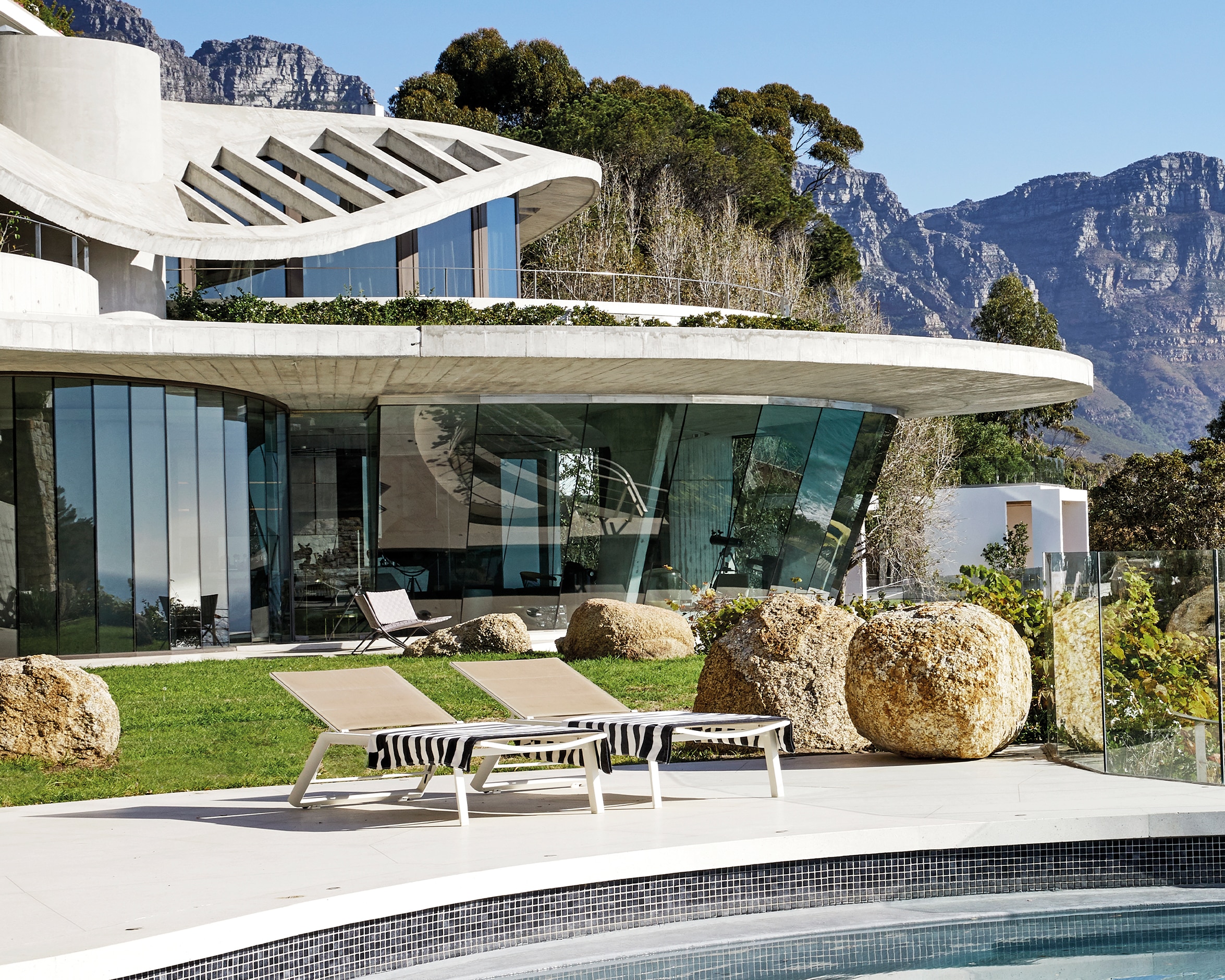Inspired by the heady, futuristic aesthetic of 60s and 70s LA modernism, this Clifton home injects some of the era’s glamour and poolside party lifestyle into present-day Cape Town
High up on Cape Town’s gorgeous Nettleton Ridge, hugging the craggy Cape mountainside and overlooking the Atlantic Ocean, is a vision that might make you think for a moment that you’d entered a parallel universe. You could be looking at Tony Stark’s Malibu mansion from the Iron Man franchise or a Bond villain’s lair, or even something out of The Jetsons.
And you wouldn’t be far off – this Clifton house, belonging to mining banker Lloyd Pengilly and designed with crucial input from his son Hanno – has its roots in the same US west-coast architecture that inspired all of these filmic fantasies, particularly the work of John Lautner.
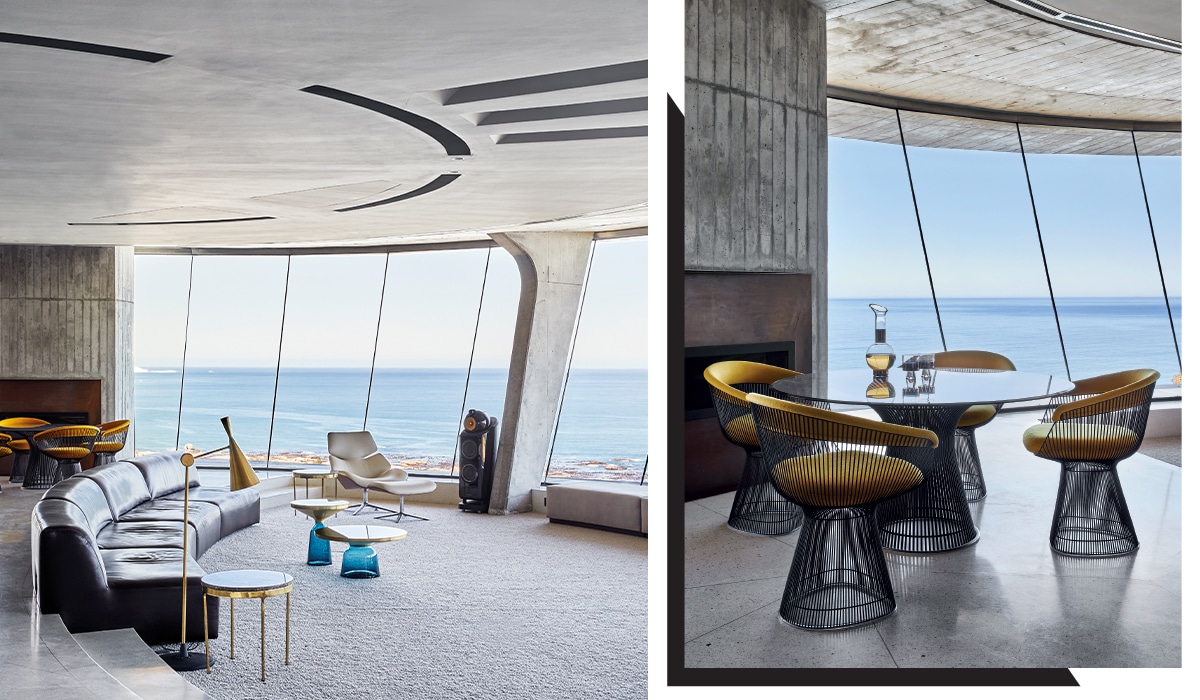
Right: In front of the fireplace – with copper and off-shutter concrete surround – is a classic Platner dining table and lounge chairs from Knoll by Warren Platner. The Tank jug and low-ball glasses are by Tom Dixon.
Perhaps the most famous of Lautner’s designs is the Elrod House in Palm Springs, which is featured in James Bond’s Diamonds Are Forever. Another, the Sheats Goldstein House, pops up in The Big Lebowski. They’re LA party pads, rising organically from their rocky mountainsides, their interiors fusing with their vast views: part stone sculpture, part flying machine.
This Cape Town house has a similar kind of sculptural presence, at once futuristic and primal. Its swooping curves and waving contours evoke the jet-set era: a time when airports and flight were glamorous and romantic, when space travel had captured the world’s imagination, and when cars spelled freedom. It was a time when technological advancement and style crystallised and found expression in an aesthetic that was filled with optimism, daring and a sense of possibility.
Cape Town firm Peerutin Architects, who designed the architecture, worked closely with Silvio Rech and Lesley Carstens Architects and Interiors (SRLC), who are responsible for the interior architecture and design. “The result is a seamless continuation of the exterior expression to every detail of the interior,” says architect David Peerutin.
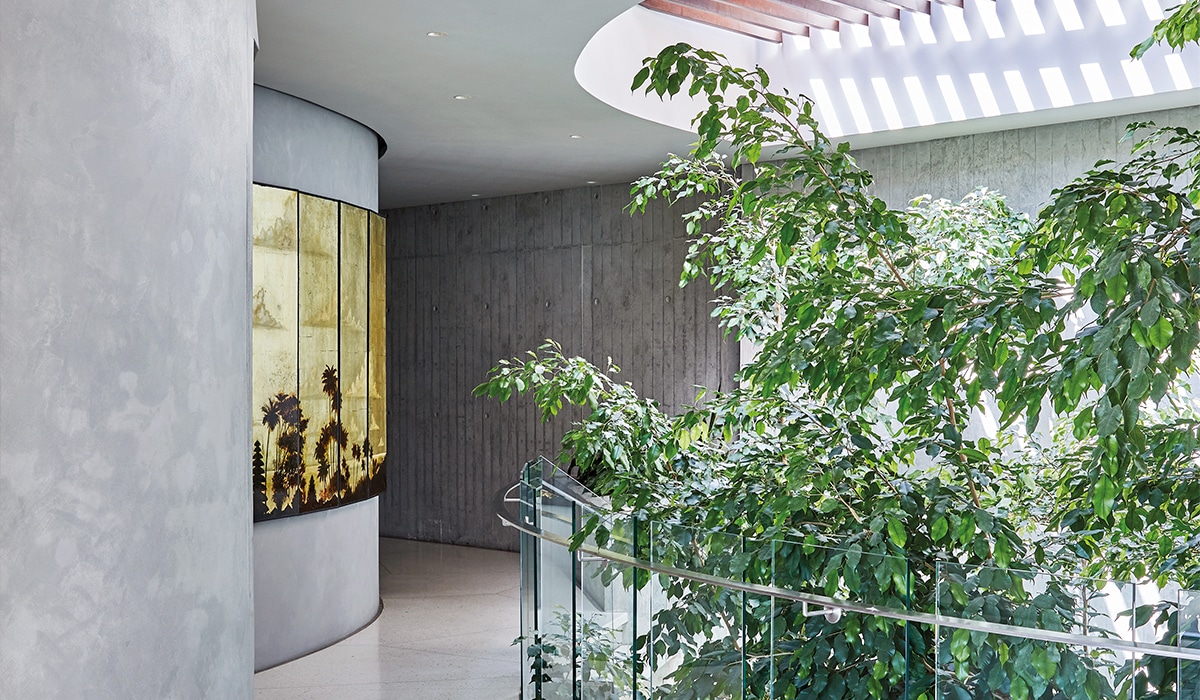
He explains that Lloyd and Hanno didn’t want just another “box-like structure that stood in opposition to its site”, so one of his main challenges was to design a large house – the 90-metre wide, 20-meter deep site is unique in Clifton – that wouldn’t impose on the landscape. “Throughout our in-depth analysis of the site and its features, the undulation of the surrounding hillsides and road configuration stood out,” says David. “We decided on a conceptual idea of a structure that mimicked this undulation in its forms and specifically the leading edges of each level.”
“We identified past examples of successful expressions of this language and the clients fell in love with the work of John Lautner,” he continues. “In our design there are some more direct translations of the iconic forms that characterise Lautner’s work, but these were adapted and integrated into a much broader expression of this architecture.”
The house is split over four levels. The bottom two are clad in stone to mimic the mountainside. “As a direct and deliberate contrast to the solid base, the upper two levels, containing all the living, entertaining spaces and the bedrooms are designed as a light, sculptural group of ‘free-forms’ that weave indoors and outdoors together,” says David. Silvio describes them as “concrete ribbons, dancing, twirling in the wind”. From the street, you enter through the garage, and from there, through a copper-clad sliding door and a lobby, there’s what Silvio calls a “Moneypenny-type” desk for a quick debriefing, completing an entrance experience fit for James Bond. A spiral staircase leads to the next level, with a bar, entertainment area, indoor swimming pool and guest bedrooms.

Up one more level there’s the main living area with a lounge, dining room and kitchen. “[The top level] is made up of two sweeping flying saucers and a bridge that links them,” explains Silvio. Across “a green lawn in the sky” is a circular off-shutter concrete party pavilion with a swimming pool, spa and sunken bar.
Silvio and Lesley, who have both designed a number of highly original and conceptually daring houses themselves, are perhaps best known for their safari lodge and resort architecture. Over the years they have largely rewritten the script on safari lodge design, inventing a kind of experiential architecture that relates to nature in a way that heightens your perceptions and becomes an adventure in itself. It’s a powerful, subtle response to nature – something to be felt rather than seen – and just what the Pengillys needed to complete their spectacular house.
They immediately understood that the experience of the house had to be elevating and uplifting: “rising above the everyday chores of normal life”. “It has one of those timeless, endless, extended views that is just so magical,” Silvio enthuses. “It gives you this larger-than-life way of looking at things. I find it very uplifting.” For a time, their studio was filled with LA photographer Slim Aarons’ images of poolside glamour, which came to symbolise American modernism as much as the architecture did. There were thumbnails of every James Bond villain’s lair they could find pinned to the walls. In fact, watching vintage Bond films became mandatory for the studio’s team.
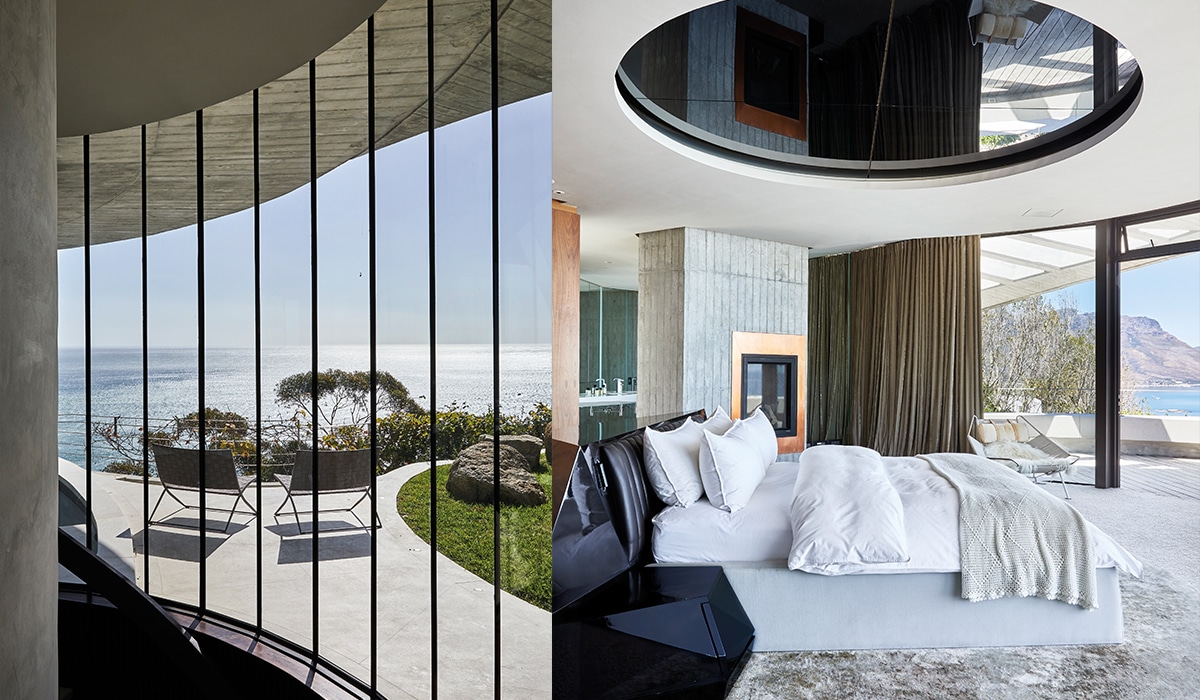
Right: The headboard in the master bedroom is a bespoke design by SRLC in Pallesando India. “The angularity of the headboard matches the faceting of the main bar,” Silvio points out. The bed has been designed with a retractable television beneath it which “slides out and up in a secret Bond way”. The black mirror detailing creates an “evening glamour”.
Silvio explains that they wanted to immerse themselves not just in the architectural styling of the time, but also to understand the essence of “glamour in that era”, to enter the “mental space” of an era infatuated with UFOs and space travel as much as swimsuits and parties. Perhaps because of its roots in LA, it’s a very cinematic idea of glamour: the vast curved, slanting windows “reminiscent of airport towers” in the house have an undeniably filmic effect.
Like the architecture itself, of course, their approach to the interior architecture wasn’t simply a matter of duplicating Lautner’s interiors – it was more a matter of translating and adapting it for a new place and time. The young Lautner was a protégé of Frank Lloyd Wright, and, like his mentor, he was fastidious about the detailing and materiality of the finishes, something Silvio and Lesley embraced.
“A lot of the challenge was to keep the architecture pure, and to slide in long tracks of wood,” says Silvio. Everywhere, beautiful, slatted timber panelling – much of it with acoustic treatment – lines the walls. It brings a luxurious warmth and velvety quietness to the interiors, contrasting beautifully with the rawness of the off-shutter concrete that peeps through.
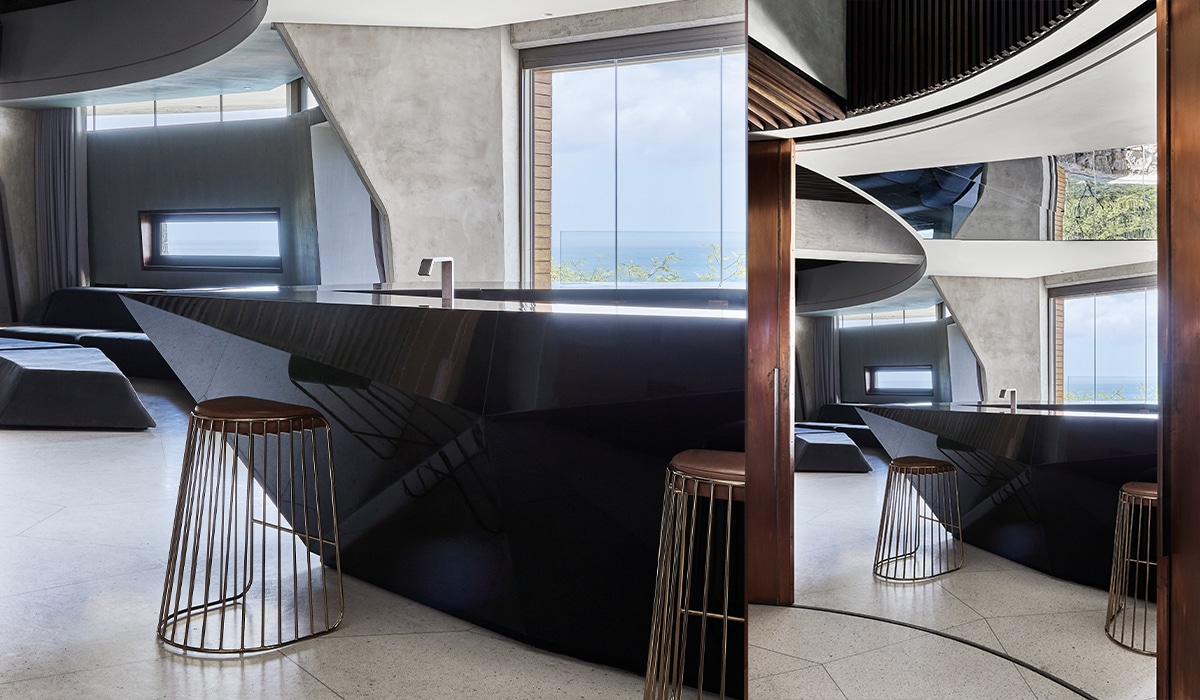
They restricted the material palette to just a few key materials: the raw concrete of the architectural shell, beautiful Palissandro Brasil wood panelling – “You just can’t beat its patterning,” says Silvio. “It’s completely gorgeous.” – and large sheets of granite that connect with the rocky materiality of the mountainside. (Even the indoor swimming pool is lined with marble and granite, making it seem like a glamorous stylised grotto.) White terrazzo covers the floors. “Coming into this all were the little copper highlights,” Silvio adds, and black mirror to add to the sparkle.
Although they sourced key furniture items, Silvio and Lesley also designed an array of bespoke furnishings and finishings for the house, including bar counters, sofas, bed units, desks and dining tables.
While the styling of the 60s and 70s-era homes that inspired this one makes clear references to flight and automobiles, Silvio and Lesley advanced the idea to take inspiration from contemporary as well as vintage references. Many of the angular, prismatic bespoke detailing they did for the house look as if it’s inspired by stealth bombers as much as by “an early Lamborghini’s dashboard”, as Silvio puts it.
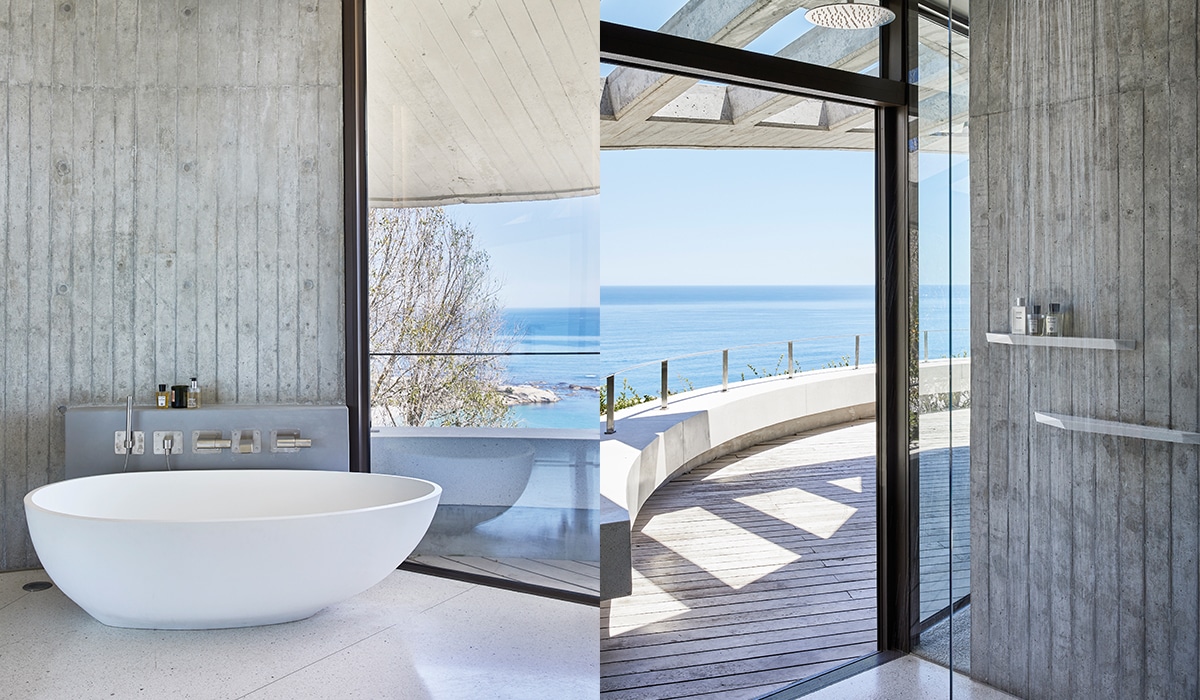
Some of the furniture that Silvio and Lesley sourced for the house is of the era – Platner tables and chairs with mustard upholstery, for example – while others are more contemporary iterations of the mid-century philosophy. Patricia Urquiola’s Husk Armchairs, the Tom Dixon lights and even the bespoke curved sofa by SRLC all represent a contemporary take on mid-century modernist design. Throughout it all, the house has an organic connection to its setting: high-tech but grounded. The main living area was designed to look like a patch of the beach below the house had “sprung up” and reconfigured itself as a plush living room. Its sunken floor is covered in a “very, very soft pale grey carpet” as if it were a luxurious patch of sand. Lush indoor planting pushes up between the volumes of the stairwell and sheets of water, such as the pond at the entrance, with that copper-clad wall behind it, represent something elemental at the heart of the house. The granite indoor swimming pool feels at once like a strange laboratory and an underground cave.
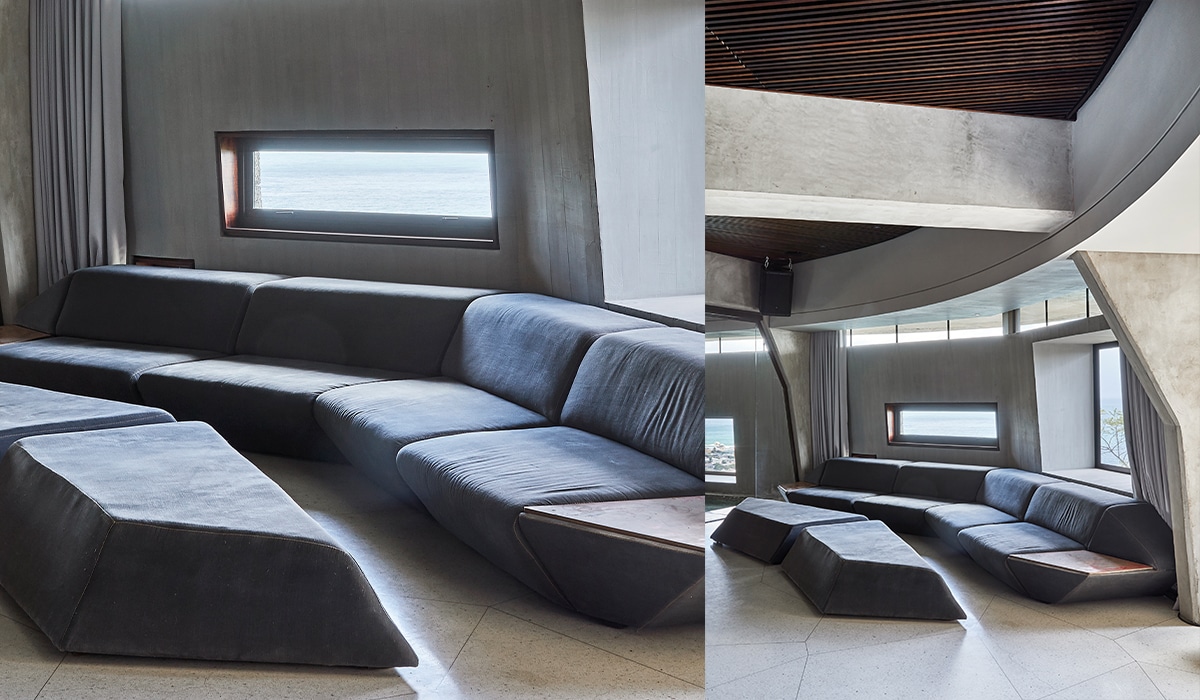
The rich detailing is also conceived as a springboard to the kinds of parties that Aarons might have liked to photograph – a counter in the sunken bar in the pavilion cantilevers over the swimming pool, making it just a little too easy to progress from having a drink, to dancing on the bar, to leaping into the water. The bar in the main living area seems to cry out to be covered in Champagne glasses. It’s the kind of house where a poolside party becomes something of an artwork.
In fact, Silvio loves to quote Lautner on the subject: “To me, architecture is an art, naturally, and it isn’t architecture unless it’s alive. Alive is what art is.” It’s a quote that hints at what Silvio means by style when he says that “This era [LA in the 60s and 70s] had such a clear understanding of what style should be. [In those days] design was seen as a leading influence in lifestyle.” This home’s homage to the bold and visionary design of the jet-set era does just that: it represents design as lifestyle – architecture as art – and has the power to make anyone who crosses its threshold feel like film star.
silvioriechlesleycarstens.co.za | peerutin.co.za
By Graham Wood
Also read: How to break these decor rules



